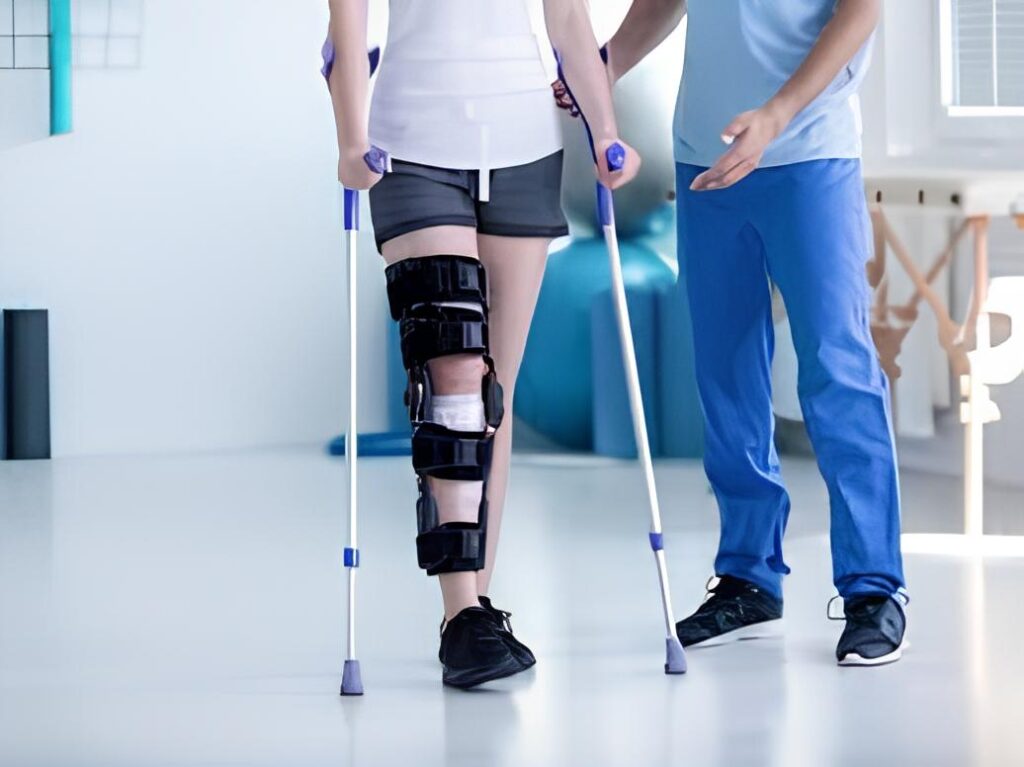Rehabilitation after a femur fracture is a structured process that aims to restore mobility, strength, and function. The timeline and specifics can vary depending on the type and severity of the fracture (e.g., femoral shaft, neck, or distal end), the surgical method used (e.g., intramedullary nailing, plates and screws, or hip replacement), and the patient’s overall health. Here’s a general guideline for post-femur fracture rehabilitation.
Aims of Post-Femur Fracture Rehabilitation
Rehabilitation following a femur fracture focuses on a gradual return to functional independence while preventing complications. The primary aims can be categorized by recovery phase:
1. Immediate/Acute Phase (0–2 weeks)
- Pain relief and inflammation control
- Prevention of complications: deep vein thrombosis (DVT), pulmonary issues, pressure sores, and muscle atrophy
- Protection of the surgical site and adherence to weight-bearing restrictions
- Maintenance of joint range of motion in adjacent joints (hip, knee, ankle)
- Initiation of mobility training (bed mobility, transfers, assisted ambulation)
2. Sub-Acute Phase (2–6 weeks)
- Progressive restoration of joint range of motion
- Initiation and progression of muscle strengthening
- Improvement in balance and coordination
- Improved mobility and independence with assistive devices
- Gradual increase in weight-bearing capacity (as allowed)
3. Functional Phase (6–12 weeks and beyond)
- Full weight-bearing (as tolerated) and normalized gait
- Regain muscle strength and endurance
- Enhance functional mobility and independence in daily activities
- Return to pre-injury activity levels (or as close as possible)
- Prevent recurrence or future falls/injuries
4. Long-Term Goals (3–6 months and beyond)
- Return to work, sport, or recreational activities
- Psychological well-being and confidence in mobility
- Long-term bone health management (especially in elderly or osteoporotic patients)
Physiotherapy rehabilitation of post femur fracture
Phase 1: Acute Phase (0–2 Weeks Post-Surgery)
Interventions:
- Pain relief: Cryotherapy, positioning, elevation
- Breathing exercises: To prevent pulmonary complications
- Circulatory exercises: Ankle pumps, foot circles to prevent DVT
- Isometric exercises: Quadriceps, gluteal, and hamstring sets
- Passive/Active-assisted ROM: For hip and knee (within pain limits)
- Bed mobility training: Rolling, bridging
- Walking aids: Begin with walker/crutches as per weight-bearing status
Phase 2: Sub-Acute Phase (2–6 Weeks) of post fracture rehabilitation of femur
Interventions:
- Active ROM exercises: For hip, knee, and ankle
- Strengthening: Progress isometrics to active and light resistance exercises (therabands)
- Gait training: Improve technique with crutches/walker
- Balance exercises: Static standing, weight shifting
- Stretching: Hamstrings, hip flexors, quadriceps, calves
- Pain and swelling management: Continue as needed
Phase 3: Strengthening Phase (6–12 Weeks)
Interventions:
- Weight-bearing progression: Partial to full as per surgeon’s orders
- Closed-chain strengthening: Squats, step-ups, leg press (as tolerated)
- Endurance training: Stationary cycling, pool walking
- Proprioceptive training: Balance board, single-leg standing
- Gait retraining: Remove walking aids gradually
Phase 4: Functional Recovery Phase (3–6 Months and Beyond)
Interventions:
- Functional training: Stairs, sit-to-stand, floor transfers
- Higher-level strength training: Resistance machines, bodyweight exercises
- Plyometric or sports-specific drills (for athletes)
- Agility and coordination drills
Education: Fall prevention, safe return to activities, bone health

